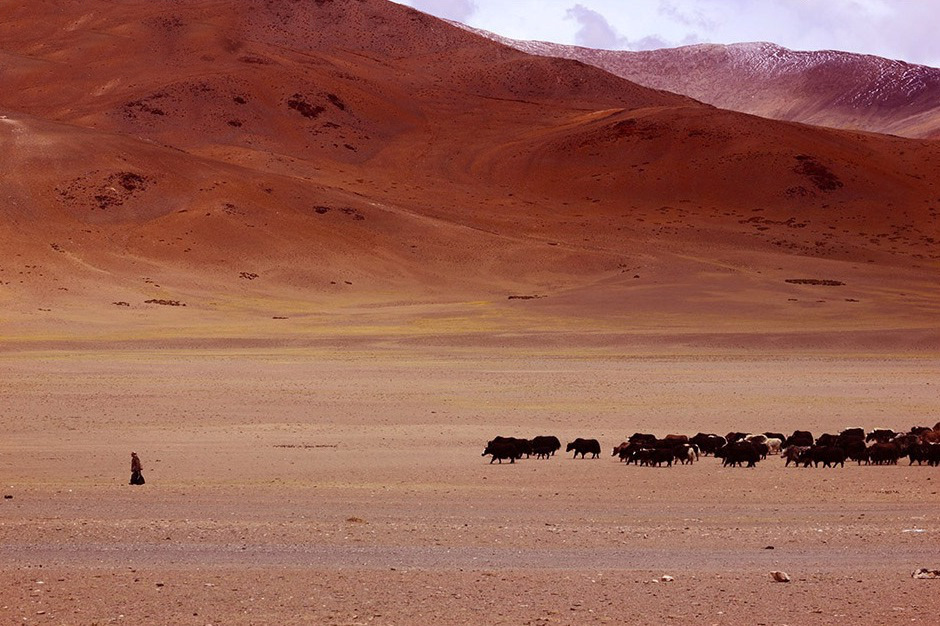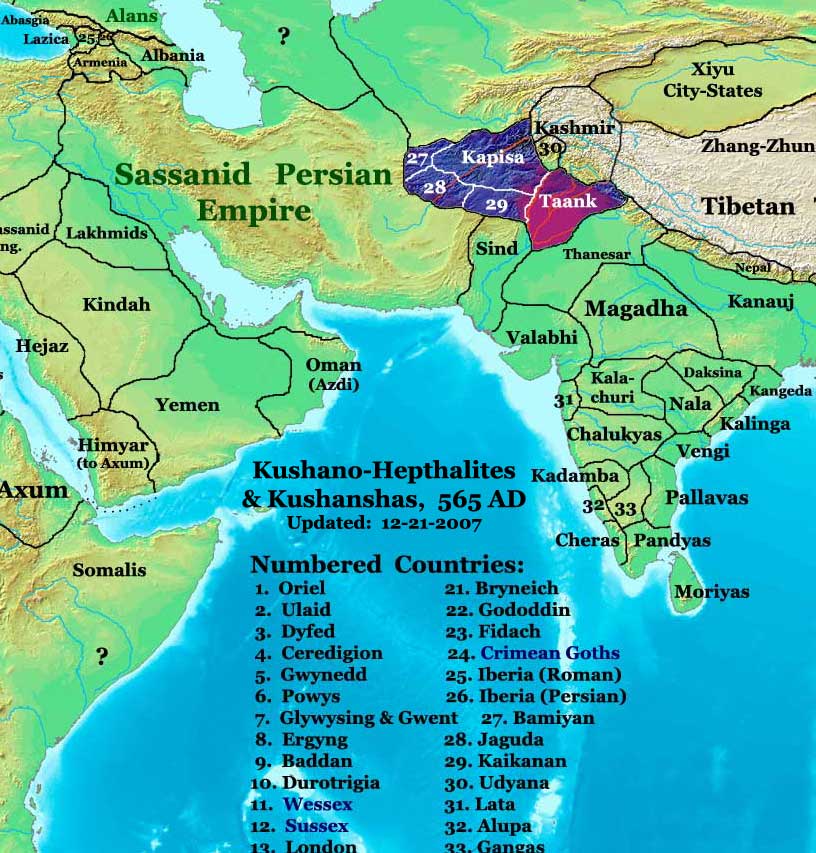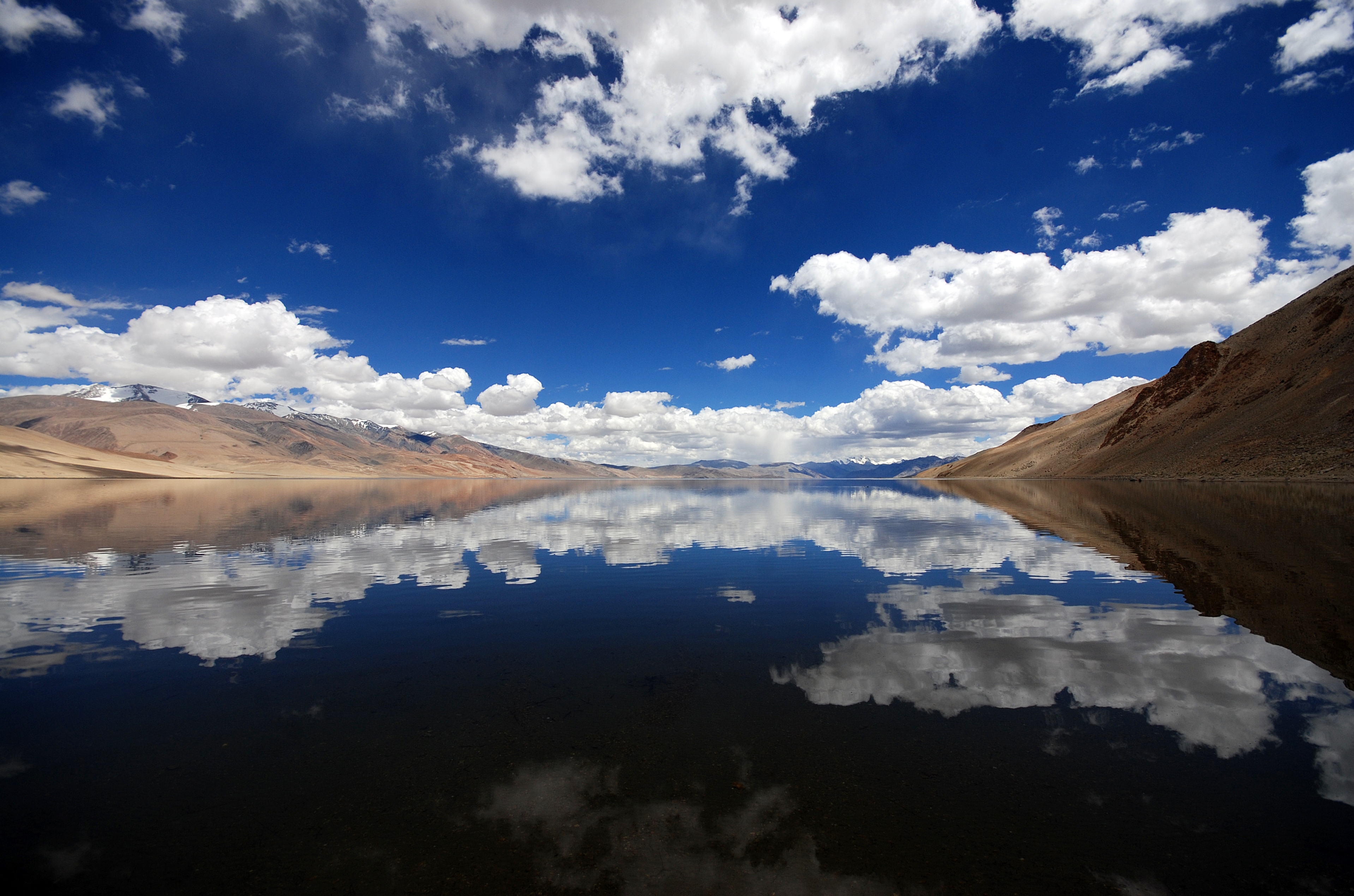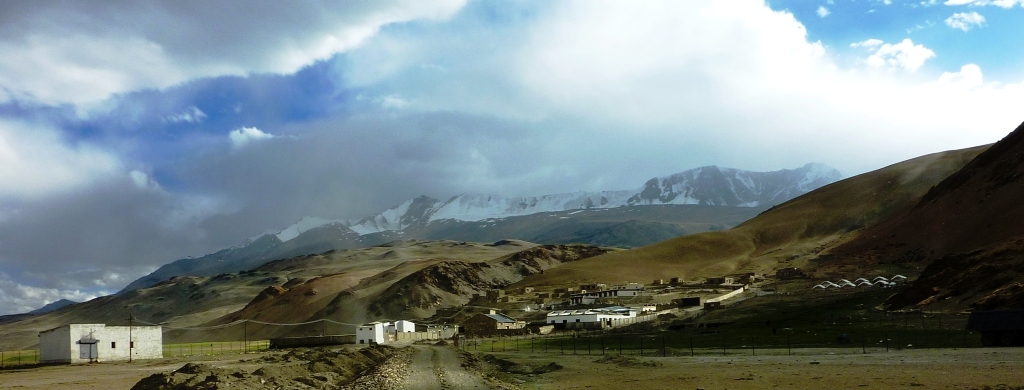|
Changtang
The Changtang (alternatively spelled Changthang or Qangtang) is a part of the high altitude Tibetan Plateau in western and northern Tibet extending into the southern edges of Xinjiang as well as southeastern Ladakh, India, with vast highlands and giant lakes. From eastern Ladakh, the Changtang stretches approximately east into Tibet as far as modern Qinghai. The Changtang is home to the Changpa, a nomadic Tibetan people. The two largest settlements within the Tibetan Changtang are Rutog Town, which is the seat of Rutog County, and Domar Township, the seat of Shuanghu County. Climate The summers are warm but short and thunderstorms can occur at any time of year, often accompanied with hail. Meanwhile, the winters are cold and Arctic-like despite the latitude, primarily due to the high elevation. History Changtang was once ruled by a culture known as the Zhangzhung, which later merged with Tibetan culture. People The people of the Changtang are nomadic pastoralists. They a ... [...More Info...] [...Related Items...] OR: [Wikipedia] [Google] [Baidu] |
Changpa
The Changpa, or Champa, are a semi-nomadic Tibetan people found mainly in the Changtang in Ladakh, India. A smaller number resides in the western regions of the Tibet Autonomous Region and were partially relocated for the establishment of the Changtang Nature Reserve. By 1989, there were half a million nomads living in the Changtang area. Changpa of the Tibet Autonomous Region The homeland of the Changpa is a high altitude plateau known as the Changtang, which forms a portion of western and northern Tibet extending to southeastern Ladakh, and ''Changpa'' means "northerners" in Tibetan. Unlike many other nomadic groups in Tibet, the Changpa are not under pressure from settled farmers as the vast majority of land they inhabit is too inhospitable for farming. Most of the Tibetan Changtang is now protected by means of nature reserves consisting of the Chang Tang Nature Reserve, the second-largest nature reserve in the world, and four new adjoining smaller reserves totallin ... [...More Info...] [...Related Items...] OR: [Wikipedia] [Google] [Baidu] |
Chang Tang Nature Reserve
Chang Tang National Nature Reserve () lies in the northern Tibetan Plateau. It is the third-largest land nature reserve in the world, after the Northeast Greenland National Park and Kavango-Zambezi Transfrontier Conservation Area, with an area of over , making it bigger than 183 countries. Administratively, it lies in Xainza County and Biru County of the Nagqu Prefecture. With the more recently established adjoining reserves listed below there is now a total of 496,000 km (191,507 sq. miles) of connected Nature Reserves, which represents an area almost as large as Spain and bigger than 197 other countries. History With assistance from the internationally renowned animal behaviourist and naturalist, George Schaller, the Chang Tang Nature Reserve was originally established by the government of Tibet Autonomous Region in 1993 to protect its fragile ecosystem. The reserve spans the vast and sparsely inhabited northern Tibetan Changtang plateau. The reserve had since been ex ... [...More Info...] [...Related Items...] OR: [Wikipedia] [Google] [Baidu] |
Tibetan Plateau
The Tibetan Plateau, also known as the Qinghai–Tibet Plateau or Qingzang Plateau, is a vast elevated plateau located at the intersection of Central Asia, Central, South Asia, South, and East Asia. Geographically, it is located to the north of Himalayas and the Indian subcontinent, and to the south of Tarim Basin and Mongolian Plateau. Geopolitically, it covers most of the Tibet Autonomous Region, most of Qinghai, western half of Sichuan, Southern Gansu provinces, southern Xinjiang province in Western China, Bhutan, the Administrative divisions of India, Indian regions of Ladakh and Lahaul and Spiti district, Lahaul and Spiti (Himachal Pradesh) as well as Gilgit-Baltistan in Pakistan, northwestern Nepal, eastern Tajikistan and southern Kyrgyzstan. It stretches approximately north to south and east to west. It is the world's highest and largest plateau above sea level, with an area of . With an average elevation exceeding and being surrounded by imposing mountain ranges that har ... [...More Info...] [...Related Items...] OR: [Wikipedia] [Google] [Baidu] |
Shuanghu County
Shuanghu County ( zh, s=双湖县), also transliterated from Tibetan as Tsonyi County or Co Nyi County (), is a county under the jurisdiction of the prefecture-level city of Nagqu, in the northernmost part of the Tibet Autonomous Region, China. It was formed in 2012, combining the territory of the former Shuanghu Special District ( zh, links=no, s=双湖特别区, ) with the eastern half of Nyima County. Much of the county is within the Changtang area. Shuanghu is the highest county of China with an average elevation of more than , while its county seat is located at . Both Tibetan and Chinese name translates to "twin lake" or "two lakes", the two lakes referred to as Khangro Lake (''khang ro tshwa kha'') and Rêjo Lake (''re co tshwa kha'') respectively. Shuanghu is very sparsely populated (averaging around 0.12 people per square kilometre, but concentrated in the southern portion of the county). The vast majority of its population practices nomadic pastoralism (mostly goats and ... [...More Info...] [...Related Items...] OR: [Wikipedia] [Google] [Baidu] |
Nomad
Nomads are communities without fixed habitation who regularly move to and from areas. Such groups include hunter-gatherers, pastoral nomads (owning livestock), tinkers and trader nomads. In the twentieth century, the population of nomadic pastoral tribes slowly decreased, reaching an estimated 30–40 million nomads in the world . Nomadic hunting and gathering—following seasonally available wild plants and game—is by far the oldest human subsistence method known. Pastoralists raise herds of domesticated livestock, driving or accompanying them in patterns that normally avoid depleting pastures beyond their ability to recover. Nomadism is also a lifestyle adapted to infertile regions such as steppe, tundra, or ice and sand, where mobility is the most efficient strategy for exploiting scarce resources. For example, many groups living in the tundra are reindeer herders and are semi-nomadic, following forage for their animals. Sometimes also described as "nomadic" are vari ... [...More Info...] [...Related Items...] OR: [Wikipedia] [Google] [Baidu] |
Nomad Mother And Son
Nomads are communities without fixed habitation who regularly move to and from areas. Such groups include hunter-gatherers, pastoral nomads (owning livestock), tinkers and trader nomads. In the twentieth century, the population of nomadic pastoral tribes slowly decreased, reaching an estimated 30–40 million nomads in the world . Nomadic hunting and gathering—following seasonally available wild plants and game—is by far the oldest human subsistence method known. Pastoralists raise herds of domesticated livestock, driving or accompanying them in patterns that normally avoid depleting pastures beyond their ability to recover. Nomadism is also a lifestyle adapted to infertile regions such as steppe, tundra, or ice and sand, where mobility is the most efficient strategy for exploiting scarce resources. For example, many groups living in the tundra are reindeer herders and are semi-nomadic, following forage for their animals. Sometimes also described as "nomadic" are various ... [...More Info...] [...Related Items...] OR: [Wikipedia] [Google] [Baidu] |
Ladakh
Ladakh () is a region administered by India as a union territory and constitutes an eastern portion of the larger Kashmir region that has been the subject of a Kashmir#Kashmir dispute, dispute between India and Pakistan since 1947 and India and China since 1959.The application of the term "administered" to the various regions of Kashmir and a mention of the Kashmir dispute is supported by the WP:TERTIARY, tertiary sources (a) through (e), reflecting WP:DUE, due weight in the coverage. Although "controlled" and "held" are also applied neutrally to the names of the disputants or to the regions administered by them, as evidenced in sources (h) through (i) below, "held" is also considered politicised usage, as is the term "occupied", (see (j) below). (a) (subscription required) Quote: "Kashmir, region of the northwestern Indian subcontinent ... has been the subject of dispute between India and Pakistan since the partition of the Indian subcontinent in 1947. The northern and wester ... [...More Info...] [...Related Items...] OR: [Wikipedia] [Google] [Baidu] |
Tsomoriri
Tso Moriri or Lake Moriri , () or "Mountain Lake", is a pristine high-altitude lake and a Ramsar Wetland Site in the remote Changthang Plateau (literally: northern plains) in Leh district of the union territory of Ladakh in India. As the largest high-altitude lake entirely within India and Ladakh's Trans-Himalayan region, it spans 26 km north-south and 3-5 km wide. The lake is fed by three primary glacial streams - Karzok Phu (west), Gyama Phu (north), and Phirse Phu (southwest) - which form extensive marshes at their deltas. Though now an endorheic lake due to its blocked southern outlet, Tso Moriri maintains slightly brackish yet palatable waters. Its oligotrophic (nutrient-poor), alkaline ecosystem supports unique biodiversity. The area gained protection as the Tso Moriri Wetland Conservation Reserve, though accessibility remains limited mostly to summer months. Year-round settlements exist only at Karzok village (northwest shore) and military outposts along the eastern ... [...More Info...] [...Related Items...] OR: [Wikipedia] [Google] [Baidu] |
Qinghai
Qinghai is an inland Provinces of China, province in Northwestern China. It is the largest provinces of China, province of China (excluding autonomous regions) by area and has the third smallest population. Its capital and largest city is Xining. Qinghai borders Gansu on the northeast, Xinjiang on the northwest, Sichuan on the southeast and the Tibet Autonomous Region on the southwest. Qinghai province was established in 1928 during the period of the Republic of China (1912–1949), Republic of China, and until 1949 was ruled by Hui people, Chinese Muslim warlords known as the Ma clique. The Chinese language, Chinese name "Qinghai" is after Qinghai Lake, the largest lake in China. The lake is known as Tso ngon in Tibetan, and as Kokonor Lake in English, derived from the Mongol Oirat language, Oirat name for Qinghai Lake. Both Tso ngon and Kokonor are names found in historic documents to describe the region.Gangchen Khishong, 2001. ''Tibet and Manchu: An Assessment of Tibet-Man ... [...More Info...] [...Related Items...] OR: [Wikipedia] [Google] [Baidu] |
Karzok
Karzok or Korzok (at an altitude of 14,995 ft or 4,570 m to 15,075 ft or 4,595 m above sea level), on the northwestern shores of the Tso Moriri lake, is a village in the Rupshu region and Community development block in India, block of the Leh district in Ladakh, India. Featuring among the List of highest cities in the world, highest permanent settlement of the world, it is located 60 southwest of Nyoma,Korzok , https://www.dangerousroads.org/asia/india/5683-korzok.html 40 km south of Puga separated by Salt Valley it is 80-100 northwest of Chumur, The Korzok Monastery, of Drukpa Lineage, Drukpa Tibetan Buddhism, Tibetan Buddhist lineage, is located here. History Karzok was on the Central Asian trade route until 1947 and was the headquarters of the Rupshu Valley. One of the kings, Rupshu Goba, who lived there with his family, built nine permanent houses there. The village has several houses, and the nomadic population who establish their tents (made of yak hair or s ... [...More Info...] [...Related Items...] OR: [Wikipedia] [Google] [Baidu] |
Pangong Tso
Pangong Tso or Pangong Lake (; zh, s=班公错, p=Bān gōng cuò; ) is an endorheic lake spanning eastern Ladakh and Ngari Prefecture, West Tibet situated at an elevation of . It is long and divided into five sublakes, called ''Pangong Tso'', ''Tso Nyak'', ''Rum Tso'' (twin lakes) and ''Nyak Tso''. Approximately 50% of the length of the overall lake lies within Tibet administered by China, 40% in Indian-administered Ladakh, and the remaining 10% is disputed and is a de facto buffer zone between India and China. The lake is wide at its broadest point. All together it covers almost 700 km2. During winter the lake freezes completely, despite being saline water. It has a land-locked basin separated from the Indus River basin by a small elevated ridge, but is believed to have been part of the Indus basin in prehistoric times. Names Historically, the lake is viewed as being made up five sublakes, which are connected through narrow water channels. The name ''Pangong Tso'' o ... [...More Info...] [...Related Items...] OR: [Wikipedia] [Google] [Baidu] |










